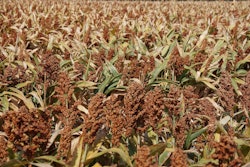
TheUSDAhas released its latestWorld Agricultural Supply and Demand Estimates(WASDE) report.
According toreports, in the closely watched supply and demand forecasts for 2023/24, the USDA said wheat harvest in thedrought-stricken Plainswould be the smallest since 1957. That would bring U.S. wheat supplies to their lowest in 16 years.
U.S. corn and soybean supplies were expected to rise sharply in the coming year due to forecasts for a record harvest for both crops, the USDA said in the report.
Harvests will be dependent on U.S. Midwest weather in the coming months, however, with some growing belts already dry.
WHEAT:The 2023/24 outlook for U.S. wheat is for reduced supplies and exports, increased domestic use, and smaller stocks compared with 2022/23. U.S. wheat supplies are forecast lower than last year with smaller beginning stocks and only slightly larger production. All wheat production is projected at 1,659 million bushels, up modestly from last year on increased harvested area.
- The harvest-to-plant ratio is down from last year, however, with above-average abandonment in Texas, Oklahoma and Kansas.
The all wheat yield, projected at 44.7 bushels per acre, is 1.8 bushels lower than last year. The first survey-based production forecast for 2023/24 winter wheat is up 2 percent from last year as higher Soft Red Winter production more than offsets a decline in Hard Red Winter and White wheat. Total 2023/24 domestic use is projected at 1,112 million bushels, up 1 percent from last year, primarily on increased feed and residual use.
Exports are projected at 725 million bushels, 50 million lower than last year. Ending stocks are projected 11 percent lower than last year and the lowest in 16 years. The projected 2023/24 season-average farm price is $8.00 per bushel, down $0.85 from last year’s record.
- The global wheat outlook for 2023/24 is for lower supplies, trade, consumption, and ending stocks compared with 2022/23. Global production is forecast at a record 789.8 million tons, up 1.5 million.
Larger crops in several countries, including Argentina, Canada, China, the EU, and India are partly offset by sizeable declines in Australia, Russia, Ukraine and Kazakhstan. The largest increase is for Argentina, where production is expected to recover from a significant drought. Near-record production is forecast in Canada on expanded area reported in the Statistics Canada planting intentions survey. EU production is forecast higher, benefiting from above-average precipitation for nearly all EU member countries except Spain and Portugal. Production in Russia is forecast lower on reduced area and yields from last year’s record. In Ukraine, production is forecast down 21 percent from the prior year, mostly due to the war with Russia.
After three consecutive record crops, production in Australia is forecast to decrease substantially as yields revert to average. Projected world consumption at 791.7 million tons is down 3.0 million compared with last year on reduced feed and residual use. Larger feed grain supplies in 2023/24 make wheat less competitive.
The largest feed and residual reductions are in Ukraine, India, Russia, and China. Global trade is projected at 209.7 million tons, a decline of 5.5 million from 2022/23. Russia is expected to once again be the largest exporter followed by the EU, Canada, Australia, the United States, and Argentina. Sharp decreases in exports for Australia, India, and Ukraine more than offset increases for Argentina, the EU, and Russia.
- 预计2023/24结束股票下降了1.9米illion tons to 264.3 million.
Stocks are forecast to decline in Russia and the EU but increase in China and India. If realized, this would represent the lowest global stocks-to-use ratio since 2014/15 with more than half of global stocks held in China.
COARSE GRAINS:The 2023/24 U.S. corn outlook is for larger production, greater domestic use and exports, and higher ending stocks. The corn crop is projected at a record 15.3 billion bushels, up more than 10 percent from last year on increases to both area and yield. The yield projection of 181.5 bushels per acre is based on a weather-adjusted trend assuming normal planting progress and summer growing season weather, estimated using the 1988-2022 time period. With beginning stocks up slightly, total corn supplies are forecast at 16.7 billion bushels, the highest since 2017/18.
- Total U.S. corn use for 2023/24 is forecast to rise about 5 percent relative to a year ago on higher domestic use and exports.
Food, seed, and industrial use is projected to rise 55 million bushels to 6.7 billion. Corn used for ethanol is projected to increase 1 percent, based on expectations of modest growth in motor gasoline consumption and ethanol’s inclusion rate into gasoline.
Feed and residual use is projected higher on a larger crop and lower expected prices. U.S. corn exports for 2023/24 are forecast to rise 325 million bushels to 2.1 billion, as lower prices support a sharp increase in global trade following the decline seen during 2022/23. U.S. market share is expected to increase slightly albeit remain below the average of the past 5 years.
阿根廷和巴西的出口高,the former reflecting a return to normal weather conditions after a drought during 2022/23. Despite a rebound in U.S. exports, Brazil is forecast to be the world’s largest exporter of corn for the second consecutive year. Exports for Ukraine are projected to decline based on lower production prospects.
With total U.S. corn supply rising more than use, 2023/24 ending stocks are up 805 million bushels from last year and if realized would be the highest in absolute terms since 2016/17.
- Stocks would represent 15.3 percent of use, the highest since 2018/19.
The season-average farm price is projected at $4.80 per bushel, down $1.80 from 2022/23.
- The global coarse grain outlook for 2023/24 is for record production and use, and larger ending stocks. World corn production is forecast record high, with the largest increases for the U.S., Argentina, the EU, China, and Serbia. Partly offsetting are smaller crops projected for Ukraine and Brazil.
World corn use is expected to rise about 4 percent, with foreign consumption increasing by a similar amount. With lower prices, world corn imports are forecast to grow just over 5 percent, driven by increases for several countries, including China, Egypt, Vietnam, Algeria, Mexico, and Colombia. Partly offsetting are reductions for the EU and Turkey. Global corn ending stocks are up 15.5 million tons to 312.9 million, mostly reflecting larger stocks for the U.S. that are partly offset by declines for Brazil and China.
For China, total coarse grain imports for 2023/24 are forecast at 38.4 million tons, up 7.2 million from a year ago but below the record 50.5 million reached during 2020/21. Expectations are for China’s internal market prices for energy feedstuffs to remain higher than the world market. Corn imports are expected to rise 5.0 million tons to 23.0 million supported by imports from 3 major exporting countries: the United States, Brazil, and Ukraine. China’s barley imports are projected at 7.0 million tons and sorghum at 8.0 million.
OILSEEDS:The 2023/24 outlook for U.S. soybeans is for higher supplies, crush and ending stocks, and lower exports compared with 2022/23.
- The soybean crop is projected at 4.51 billion bushels, up 5 percent from last year’s crop mainly on higher yields.
With lower beginning stocks partly offsetting increased production, soybean supplies are forecast at 4.75 billion bushels, up 4 percent from 2022/23. Total U.S. oilseed production for 2023/24 is projected at 132.8 million tons, up 6.9 million from 2022/23 mainly on higher soybean production. Production forecasts are also higher for canola, peanuts and cottonseed.
- The U.S. soybean crush for 2023/24 is projected at 2.31 billion bushels, up 90 million from the 2022/23 forecast on favorable crush margins and strong demand for soybean oil as a biofuel feedstock, which is projected to increase 900 million pounds to 12.5 billion.
国内豆粕预计将消失increase 2 percent from 2022/23 on lower soybean meal prices and modest growth primarily in poultry production.
U.S. soybean meal exports are forecast at 14.8 million short tons, leaving the U.S share of global trade slightly above the prior 5-year average. U.S. soybean exports are forecast at 1.98 billion bushels, down 40 million from 2022/23 with strong competition from increasing South American production and limited gains in global import demand.
- U.S. ending stocks for 2023/24 are projected at 335 million bushels, up 120 million from the revised 2022/23 forecast.
Soybean and product prices are all forecast lower for 2023/24. The 2023/24 U.S. season-average soybean price is forecast at $12.10 per bushel compared with $14.20 per bushel in 2022/23. Soybean meal prices are forecast at $365 per short ton, down $90. Soybean oil prices are forecast at 58 cents per pound, down 6 cents from 2022/23.
The 2023/24 global oilseed outlook shows higher production, crush, and ending stocks compared with last marketing year.
- Global production is rising 43.8 million tons to 671.2 million mainly on higher soybean production for South America and the U.S. higher sunflowerseed for the EU, and higher rapeseed for the EU and Canada.
Partly offsetting is lower rapeseed production for Australia on a lower yield after 3 years of exceptional weather conditions.
Combined production for major South American producers (Brazil, Argentina, Paraguay, and Uruguay) is growing 31.9 million tons after last year’s drought in southern South America and a higher expected area.
Global 2023/24 oilseed crush is growing 20.7 million tons to 542.5 million, with most of the growth in soybean crush for Argentina, China, Brazil, and the U.S.
Soybean products account for the majority of the growth in oilseed meal and vegetable oil trade, counter to last marketing year when lower Argentine supplies depressed soybean product exports and were replaced by palm oil and sunflowerseed and rapeseed products.
The growth in global oilseed trade is slower than the prior decade, increasing less than 1 percent in 2023/24 as higher soybean exports are mostly offset by lower rapeseed and sunflowerseed shipments. Trade is limited by higher oilseed production in major importing countries and lower production in major exporters of rapeseed. For the EU, higher oilseed production drives lower import demand of sunflowerseed, rapeseed, soybeans, and products.
Larger soybean crush for China also reduces demand for rapeseed and products. Rapeseed production in major exporters, particularly Australia and Ukraine, is also down. Global 2023/24 soybean trade is growing 4.0 million tons to 172.4 million, reflecting increased demand by China and higher imports for Pakistan, Egypt and Bangladesh after last marketing year’s declines.
China’s imports are rising 2.0 million tons to 100.0 million, a slower rate than the prior decade. With projected weaker growth for China and EU soybean imports, coupled with record South American supplies, the U.S. share of global exports is expected to decline. Global 2023/24 soybean ending stocks are projected up 21.5 million tons to 122.5 million, with most of the increase for Brazil, Argentina, the United States, and China. The ending stocks figure includes mid-season stocks (September 30, 2024) for Brazil and Argentina and reflects growing supplies leading into the 2024 U.S. export season.




















